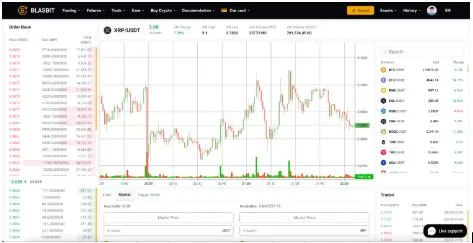From Code to Clarity: Boosting eCommerce Site Performance
E-commerce is at war for every second of user attention in 2025. Once competitors are updating their catalogs on the fly and customers need quick replies on their mobile devices, site speed has ceased to be an aspect of technical measurement but an actual motivator of real growth.
Laconica: Real Business Acceleration
When we talk about companies that do not simply build online stores but turn them into real sales machines, Laconica – eCommerce development company — is one of the brightest examples. Over 10 years, the team has delivered more than a hundred projects for B2B and B2C brands, specializing in Magento, Shopify, and custom solutions. In 2025, Laconica launched its own product — Laconica Commerce Cloud, which reduces page load time by up to 50% and increases conversion rates by an average of 18%.
The platform integrates with popular stacks, supports AI traffic balancing, advanced caching, and automatic image optimization. For clients, this is not just an upgrade but real growth in sales and return on investment from day one. As an international team, Laconica does not limit itself to the technical side: its portfolio includes projects with deep UI/UX design and ERP and CRM integration, as well as platform migrations without data loss or drops in search rankings.
eCommerce Performance: Points That Cannot Be Ignored
More and more often, store owners face the reality that even minimal delays in page loading can cost thousands of dollars. Research shows that each additional second of loading reduces conversion by 7–20%, and if a page takes longer than three seconds to load, more than half of mobile users simply leave. In 2025, mobile traffic had already exceeded 70% of total purchases, making mobile optimization the top priority for growth.
Though it is a common opinion that the two major sources of congestion are the server and the database, the recent statistics depict this as not being the case. The frontend: processing, rendering, and loading scripts and images consume more than 60 percent of the time needed to load. Nonetheless, the backend cannot be omitted — its slow database queries, absence of caching, and slow APIs contribute to delays and, in general, reduce the responsiveness of the entire site.
| Tool | Functionality |
| GTmetrix | Page speed analysis |
| WebPageTest | Detailed performance testing |
| Lighthouse | Audit for performance, SEO, accessibility |
| Pingdom | Uptime and performance monitoring |
| Cloudflare | CDN and security optimization |
| NitroPack | All-in-one speed optimization |
| Fastly | Edge cloud platform |
| New Relic | Full-stack observability |
| Sematext | Monitoring and log management |
| SpeedCurve | Frontend performance monitoring |
These tools not only help identify bottlenecks but also track the dynamics of changes after optimizations are implemented. Moreover, modern platforms like Laconica integrate their own solutions for monitoring and automatic optimization, which is especially important for large stores with high traffic and complex architecture.
Technical Methods of Acceleration: From Frontend to Backend
It is particularly important to pay attention to images: they account for up to 38% of a page’s weight, and their optimization provides an instant speed boost. For e-commerce, this is critical: 66% of buyers want to see at least three product photos before making a purchase. Key directions for the backend in 2025 involve delivering content from servers closest to the user using a CDN, which reduces latency and lowers the load on the main server.
Security also impacts performance: implementing TLS (HTTPS) is the norm for e-commerce, but it should be done with modern protocol versions, such as TLS 1.3, that reduce the number of network round-trips, consequently reducing delays when establishing the connection. On the other hand, hardware accelerators and proper caching of TLS sessions reduce CPU load and speed up request processing.
Here are typical mistakes most often found on eCommerce sites that negatively affect performance and conversion:
- Using outdated image formats and a lack of compression;
- Overloaded with third-party scripts and widgets;
- No lazy loading for media content;
- Complex and multi-step checkout forms;
- Unoptimized fonts and lack of caching;
- Non-responsive design for mobile devices;
- Hidden fees and non-transparent delivery costs.
Each of these mistakes is not just a technical flaw but a real risk of losing a customer at any stage of the funnel, because even the most beautiful and functional store will not sell if it loads slowly or irritates the user.
Conclusion
In 2025, winners are not those who simply launch beautiful stores but those who make them fast, convenient, and transparent for the user. Invest in optimization, automate routine tasks, test hypotheses, and do not be afraid to change approaches. As market leaders’ experience shows, speed is not just a pleasant aspect but a mandatory condition for success in digital retail.






